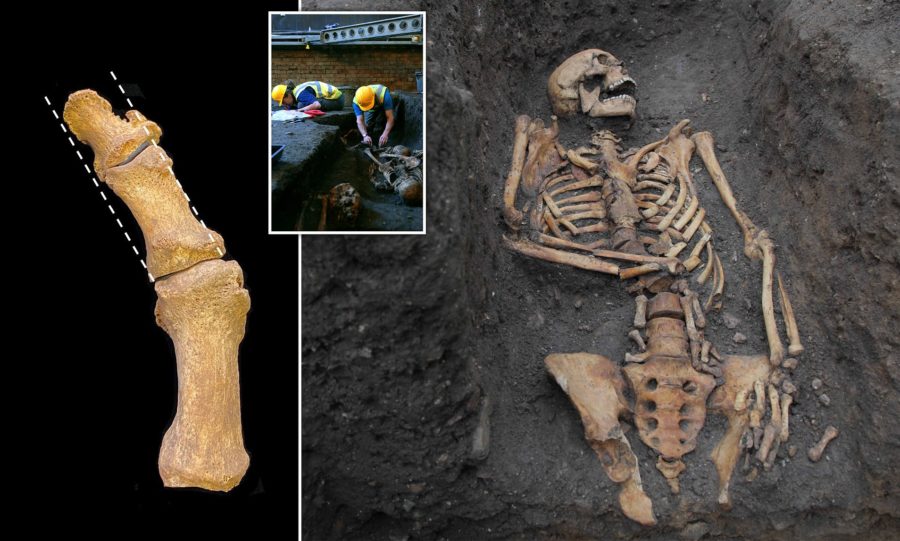Bunions-
Researchers analyzing skeletal remains in the city of Cambridge find a dramatic increase in ‘hallux valgus’ around the time that pointed shoes became de rigueur in the 1300s.
University of Cambridge

The British have suffered for their fashion for centuries according to a new study suggesting that a vogue for shoes with a pointed tip led to a sharp increase in hallux valgus of the big toe — often called bunions — in the late medieval period.
Researchers investigating remains in Cambridge, UK, found that those buried in the town centre, particularly in plots for wealthier citizens and clergy, were much more likely to have had bunions — suggesting rich urbanites paid a higher price for their footwear in more ways than one.
A University of Cambridge team also discovered that older medieval people with hallux valgus were significantly more likely to have sustained a broken bone from a probable fall compared to those of a similar age with normal feet.
Hallux valgus is a minor deformity in which the largest toe becomes angled outward and a bony protrusion forms at its base, on the inside of the foot.
While various factors can predispose someone to bunions, from genetics to muscle imbalance, by far the most common contemporary cause is constrictive boots and shoes. The condition is often associated with wearing high heels.
Archaeologists analysed 177 skeletons from cemeteries in and around the city of Cambridge and found that only 6% of individuals buried between 11th and 13th centuries had evidence of the affliction. However, 27% of those dating from the 14th and 15th centuries had been hobbled by longstanding hallux valgus.
Researchers point out that shoe style changed significantly during the 14th century: shifting from a functional rounded toe box to a lengthy and more elegant pointed tip.
In a paper published today in the International Journal of Paleopathology, the team from Cambridge University’s After the Plague project argues that these “poulaine” shoes drove the rise of bunions in medieval Britain.
“The 14th century brought an abundance of new styles of dress and footwear in a wide range of fabrics and colours. Among these fashion trends were pointed long-toed shoes called poulaines,” said study co-author Dr Piers Mitchell from Cambridge’s Department of Archaeology.
“The remains of shoes excavated in places like London and Cambridge suggest that by the late 14th century almost every type of shoe was at least slightly pointed — a style common among both adults and children alike.” Read more from Science Daily.






